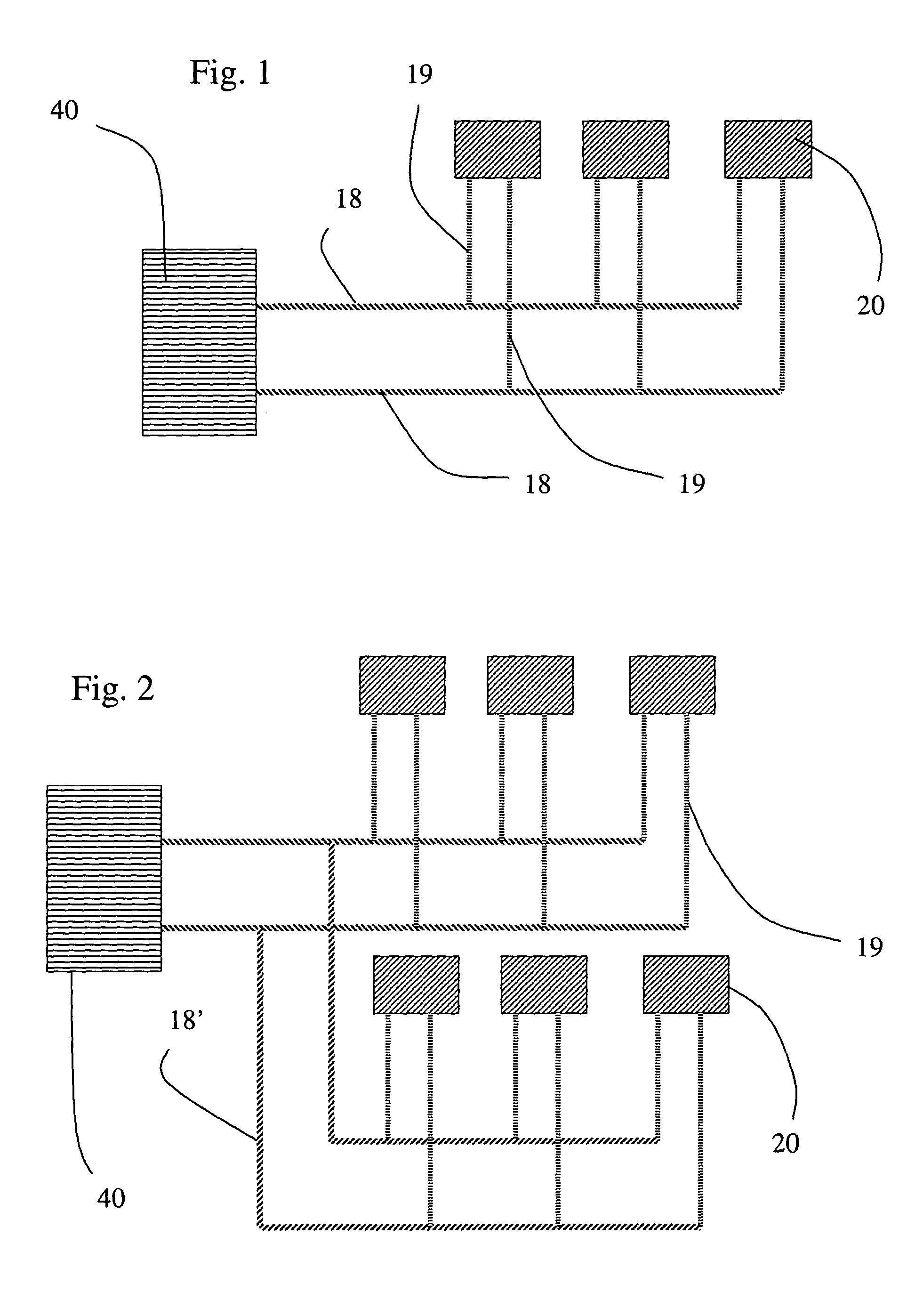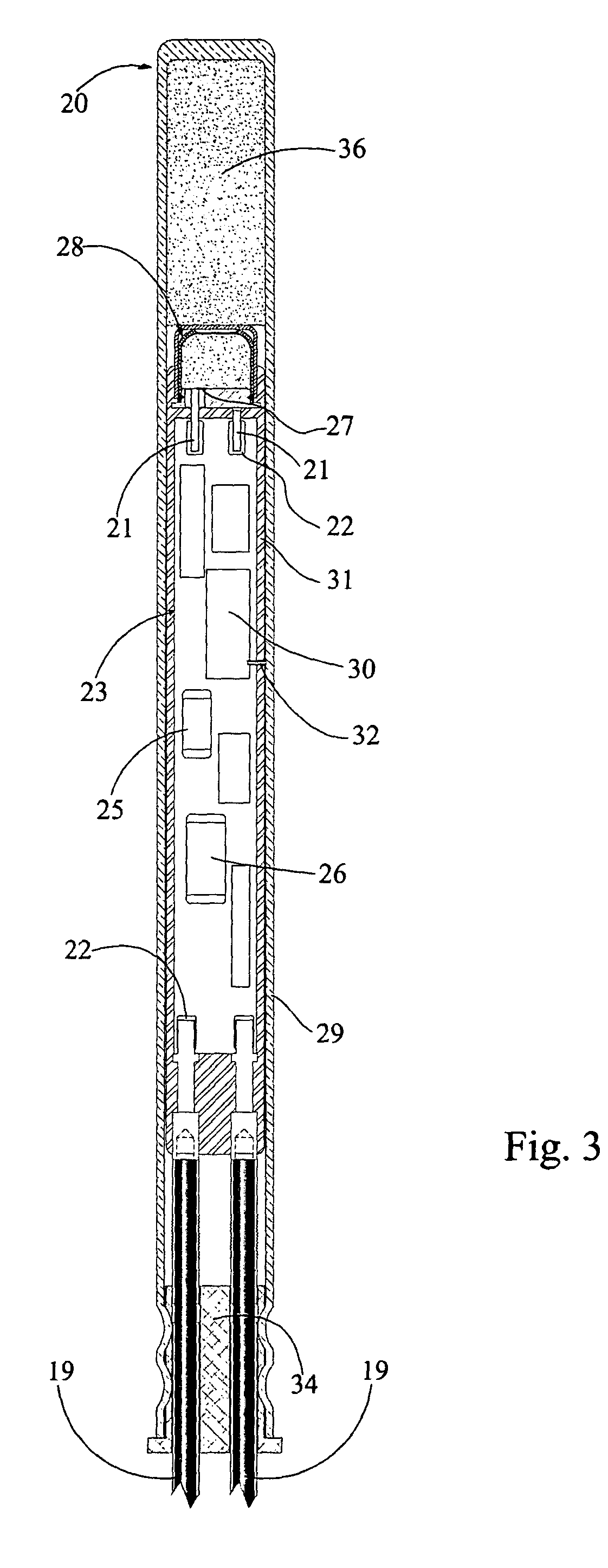Current modulation-based communication from slave device
a slave device and current modulation technology, applied in the field of electronic data transfer, can solve the problems of increasing power consumption and circuit complexity, affecting the proper transmission of data, and general noise of background current draw, so as to achieve low signal-to-noise ratio and minimize background noise in the level of current draw
- Summary
- Abstract
- Description
- Claims
- Application Information
AI Technical Summary
Benefits of technology
Problems solved by technology
Method used
Image
Examples
Embodiment Construction
[0021]To describe the present invention with reference to the details of a particular preferred embodiment, it is noted that the present invention may be employed in an electronic system comprising a network of slave devices, for example, an electronic blasting system in which the slave devices are electronic detonators. As depicted in FIG. 1, one embodiment of such an electronic blasting system may comprise a number of detonators 20, a two-line bus 18, leg wires 19 including connectors for attaching the detonator to the bus 18, a logger (not shown), and a blasting machine 40. The detonators 20 are preferably connected to the blasting machine 40 in parallel (as in FIG. 1) or in other arrangements including branch (as with the branched bus 18′ shown in FIG. 2), tree, star, or multiple parallel connections. A preferred embodiment of such an electronic blasting system is described below, although it will be readily appreciated by one of ordinary skill in the art that other systems or d...
PUM
 Login to View More
Login to View More Abstract
Description
Claims
Application Information
 Login to View More
Login to View More - R&D
- Intellectual Property
- Life Sciences
- Materials
- Tech Scout
- Unparalleled Data Quality
- Higher Quality Content
- 60% Fewer Hallucinations
Browse by: Latest US Patents, China's latest patents, Technical Efficacy Thesaurus, Application Domain, Technology Topic, Popular Technical Reports.
© 2025 PatSnap. All rights reserved.Legal|Privacy policy|Modern Slavery Act Transparency Statement|Sitemap|About US| Contact US: help@patsnap.com



